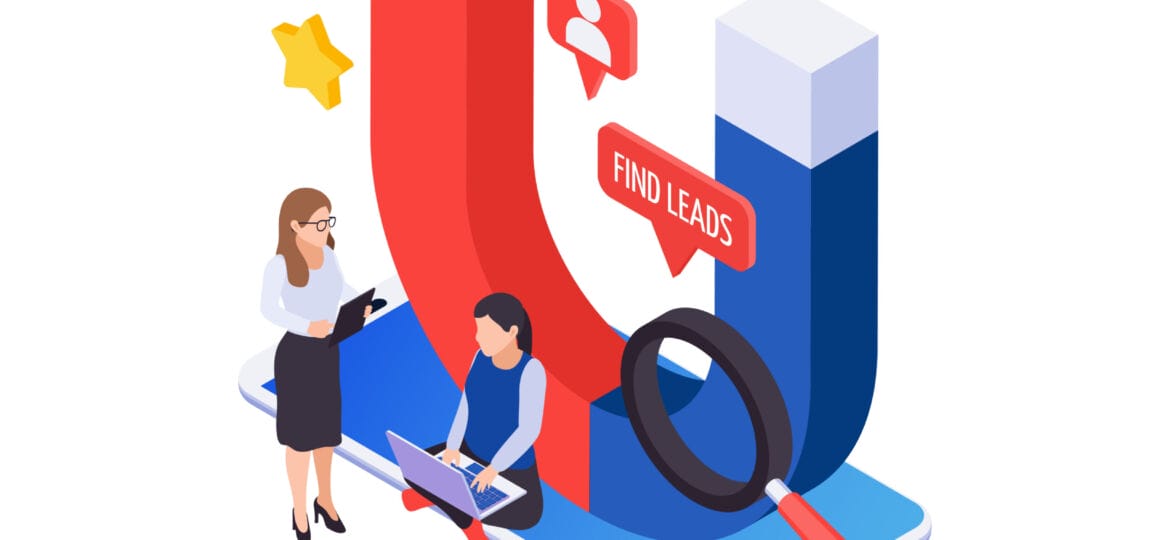
Why Is Lead Identification Important For B2B?
- It allows businesses to prioritize potential customers and develop an effective lead generation strategy.
- Knowing who visits a business’s site and why can help determine which leads to prioritize and which to ignore.
- Prioritizing leads based on metrics such as lifetime value, average order size, and likelihood of conversion can help businesses fill their pipeline with the most promising opportunities and convert more leads into paying customers.
Identifying your leads is a crucial first step in creating a well-oiled B2B machine. You need to know who’s on your site, and why they are there — so you can decide which ones to prioritize and which ones to ignore. Without an understanding of who visits your site (and why), it’s impossible to create an effective lead generation strategy that will help you grow your business.
KNOW WHO’S ON YOUR SITE
Knowing who’s on your site is important.
- Traffic: Visitors to your website are not always leads, but some of them will be. Knowing who visits a page can help you determine what types of ads they may respond to or how they found out about your product or service.
- Leads: Lead status refers to where someone is in the buying cycle, which varies depending on industry and company size. For example, someone might enter their contact information into an online form if they’re only looking into purchasing your product or service and haven’t yet decided whether it’s right for them (they’re just “interested”). On the other hand, if they’ve filled out a form with all of their contact details in order to learn more about cost information or make an inquiry about what it takes to become a customer (“qualified”), that’s a good sign that they’re closer than most people are when first considering making a purchase decision from you; however, this doesn’t mean it will necessarily convert into an actual sale anytime soon!
- Buyers: In order for someone buying something from you on behalf of his/her company (i.e., “B2B”), there needs to be approval from upper management first—which means asking questions like “How much does it cost? What does this mean for our budget? How do we know we’ll get value back?” These questions indicate that he/she has already cleared some hurdles before coming here today.”
IDENTIFY YOUR LEADS
When you identify your leads, you can prioritize them and fill your pipeline with the most promising opportunities. Once that’s done, you’ll know when high priority potentials are on your site. This can be helpful in understanding how to engage and nurture those prospects so they get to know more about your product or service.
- What is Lead Identification?
Lead identification occurs when a visitor comes across a page on your website where they have expressed interest in what you have to offer by clicking or viewing an ad or other type of advertisement (e.g., social media). You want to capture these leads with information like name, email address and company name so that they can become future customers for whatever product/service it is that you have provided!
PRIORITIZE YOUR LEADS
Once you’ve identified the leads that are most likely to convert, it’s time to prioritize them. If you’re selling services or products, consider using metrics like lifetime value (the amount of revenue your typical customer generates over their lifetime) and average order size.
If you’re an e-commerce site, your website should be tracking how many people visit your site, what pages they visit during their session, and how long they stay on each page. You can use these metrics as indicators of how valuable a lead is likely to be.
The best way to prioritize leads is by combining all of these factors together so that every contact has a score from 0 – 10 based on:
- How much time they have spent on your website – higher the better
- Number of pages visited during this session – higher the better
- The likelihood of conversion – lower scores are better
CONCLUSION
When you have a clear view of who your ideal customer is, you can develop content and messaging that resonates with them. That means you’ll be able to reach out to more prospects and convert more leads into paying customers.

